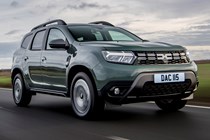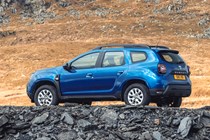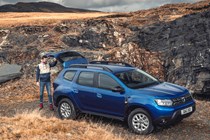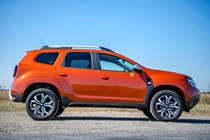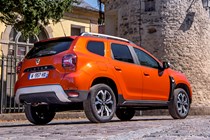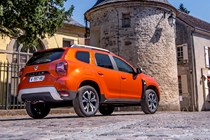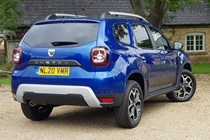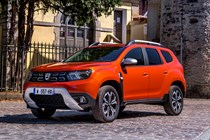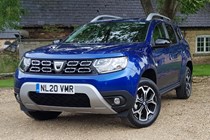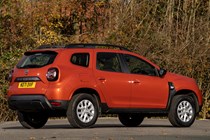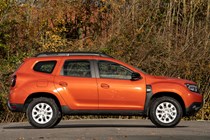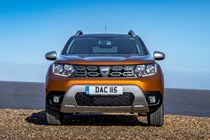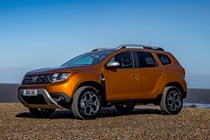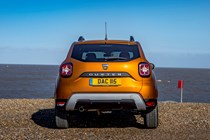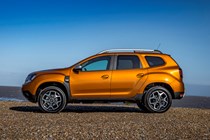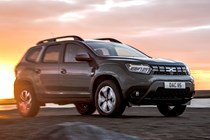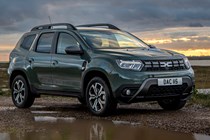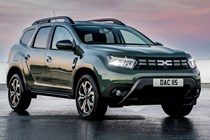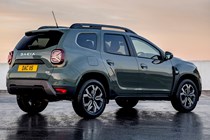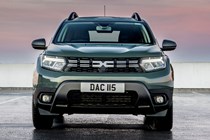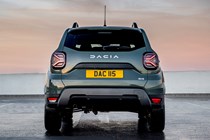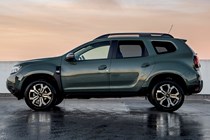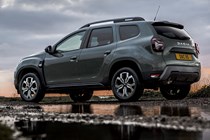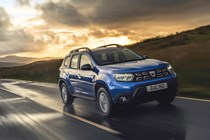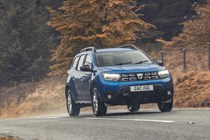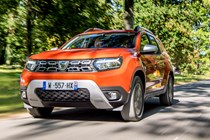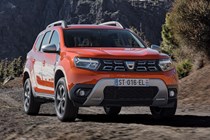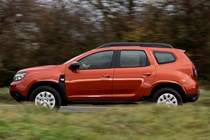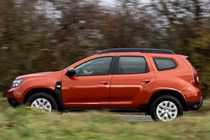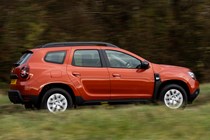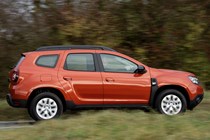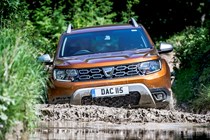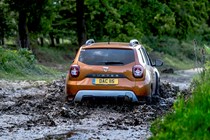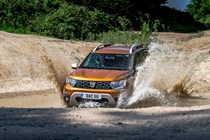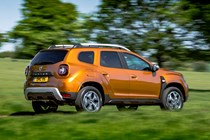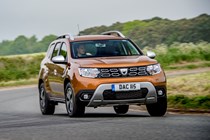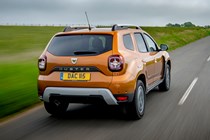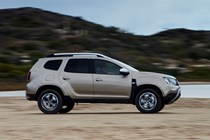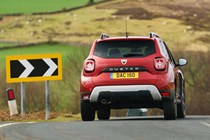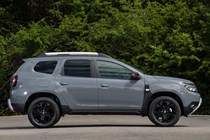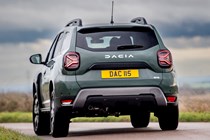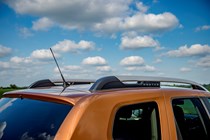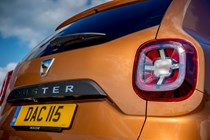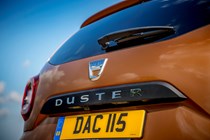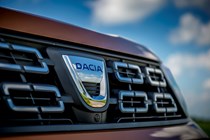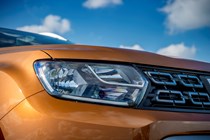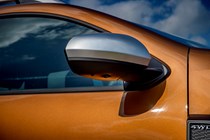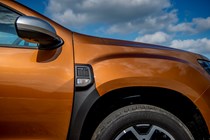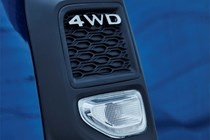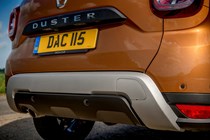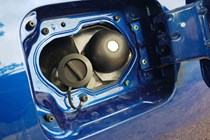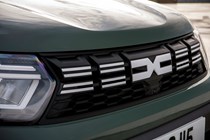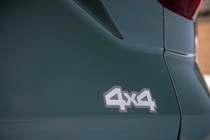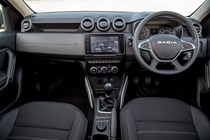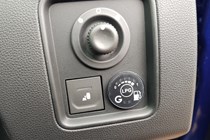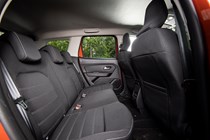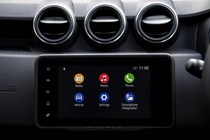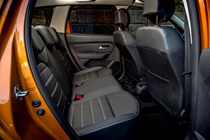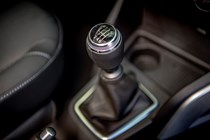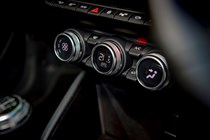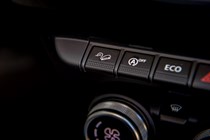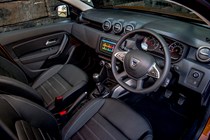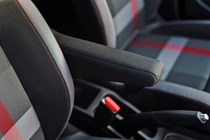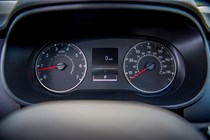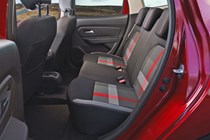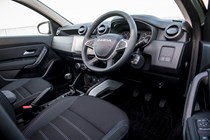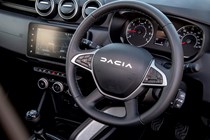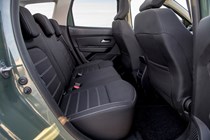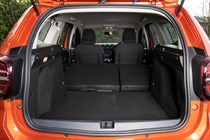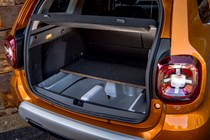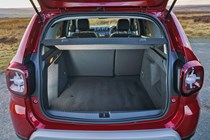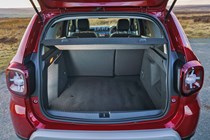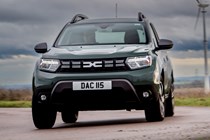Dacia Duster SUV (2018-2024) engines, drive and performance
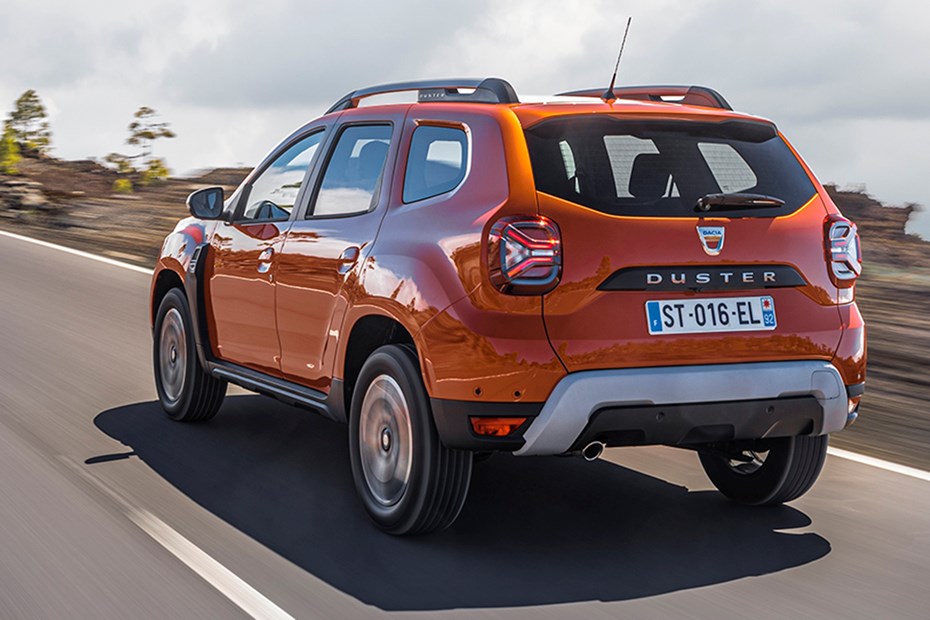
- Feels nippier than on-paper figures suggest
- Compact 1.0-litre petrols feel punchy
- Automatic only offered with TCe 150
Petrol engines
Currently you’ve a broad choice of eight engine and transmission options for the Duster, but despite parent firm Renault’s expertise with electric cars and, more recently, with hybrids, no such system is offered in this one. Dacia doesn’t publicise its engine sizes, instead using the terms TCe for petrols, Bi-Fuel for LPG and Blue dCi for diesel, followed by a number equating to the power output in horsepower.
The entry-point to the range is the TCe 90, a three-cylinder 1.0-litre engine that delivers reasonable performance. You’ll need to work the standard five-speed manual gearbox hard to extract the most performance from the car, especially on motorways. The larger capacity models make a better fist of things, though.
Now with four-cylinders and a 1.3-litre capacity, the TCe 130 and TCe 150 get a six-speed manual gearbox or EDC automatic in the higher-powered version. This is a much more flexible pairing, requiring fewer gearchanges. The more powerful version of the two feels a little quicker, but both versions are capable of quick motorway running that’s unaffected by inclines or loads.
Diesel engine
Just one diesel engine is available – with front- and four-wheel drive choices – in Blue dCi 115 guise. The ‘blue’ part of its name indicates that this diesel engine requires AdBlue to ensure it meets stringent emissions regulations. Maximum power is generated at 3,750rpm, with peak torque of 260Nm available at 2000rpm.
Front-wheel drive versions can reach 113mph and complete the 0-62mph sprint in 10.3 seconds. Opt for four-wheel drive and those figures become 108mph and 10.2 seconds, respectively.
Bi-Fuel (LPG) engine
Liquified petroleum gas (LPG) was popular in the 1980s and 1990s, due to the cost of the fuel being significantly less than unleaded petrol. For Dacia, it’s allowed it to introduce lower CO2 outputs without the expense of engineering a hybrid package.
Based on the TCe 90, the 100hp Bi-Fuel can run on petrol or LPG, with an additional tank housed in the spare wheel well under the boot floor. While power remains the same, there’s a difference in torque, with 170Nm being developed at 2,000rpm.
However, the extra 61kg that the installation brings dents performance. In petrol mode top speed is 106mph, while the 0-62mph time is a leisurely 15.1 seconds. It’s a tad quicker in LPG guise, though at 13.8 seconds, but top speed dips further to 104mph.
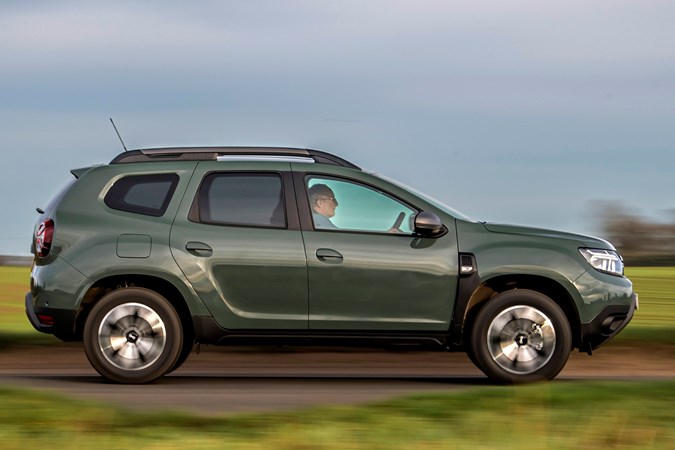
What’s it like to drive?
- Steering is light but lacks precision
- Perfectly competent around corners
- Easier to manoeuvre around town
The Duster is particularly easy to drive and manoeuvre thanks to its electric power steering system, though this lacks the weight and precision of its predecessor on faster roads. There’s nothing wrong with the set-up, though it doesn’t give you the best idea of how much grip the front tyres have when cornering at higher speeds.
Despite this, the balance between comfort and road holding is well-judged for most drivers, as the Duster is untaxing to drive, parking is similarly easy and it handles tidily enough around bends. Yes, if you carry too much speed through low-speed corners the stability control cuts in abruptly to limit power as you reach the relatively low limit of front-end traction.
The suspension is quite soft, but it keeps the body in check reasonably well through turns. Aiding this is the fact that the Duster is relatively lightweight for an SUV of this size, so while it’s not been designed to be thrown around corners, it shouldn’t get you into trouble either.

What’s it like off-road?
The Duster is more capable off road than most drivers could ever want. Ground clearance for four-wheel drive versions is a decent 210mm – 205mm for two-wheel drive models – and with short overhangs it’s surprisingly capable over rough terrain.
The four-wheel drive system provides good traction, the ground clearance is sufficient for all but the most challenging surfaces and it’s possible to have hill-descent control for safe downhill progress off-road.
In fact, the only area where the Duster tangibly lags behind more serious off-roaders is in the level of water it can wade through – that’s capped at 350mm. Venture deeper than this and you might end up with soggy carpets, as the door seals aren’t designed for this level of immersion.
What’s the Bi-Fuel (LPG) like to drive?
On the road, it feels much like any other 1.0-litre Duster. Revvy, eager and willing for those who like to drive hard, and not at all quick at low revs for those who don’t. Swapping between petrol and gas is by the dashboard control and proves to be as smooth as you’d expect for a factory conversion.
There’s little difference in the driving experience between two settings, although fuel consumption is higher when running on LPG, and the trip computer doesn’t take into account gas being used for its fuel consumption read-out.


